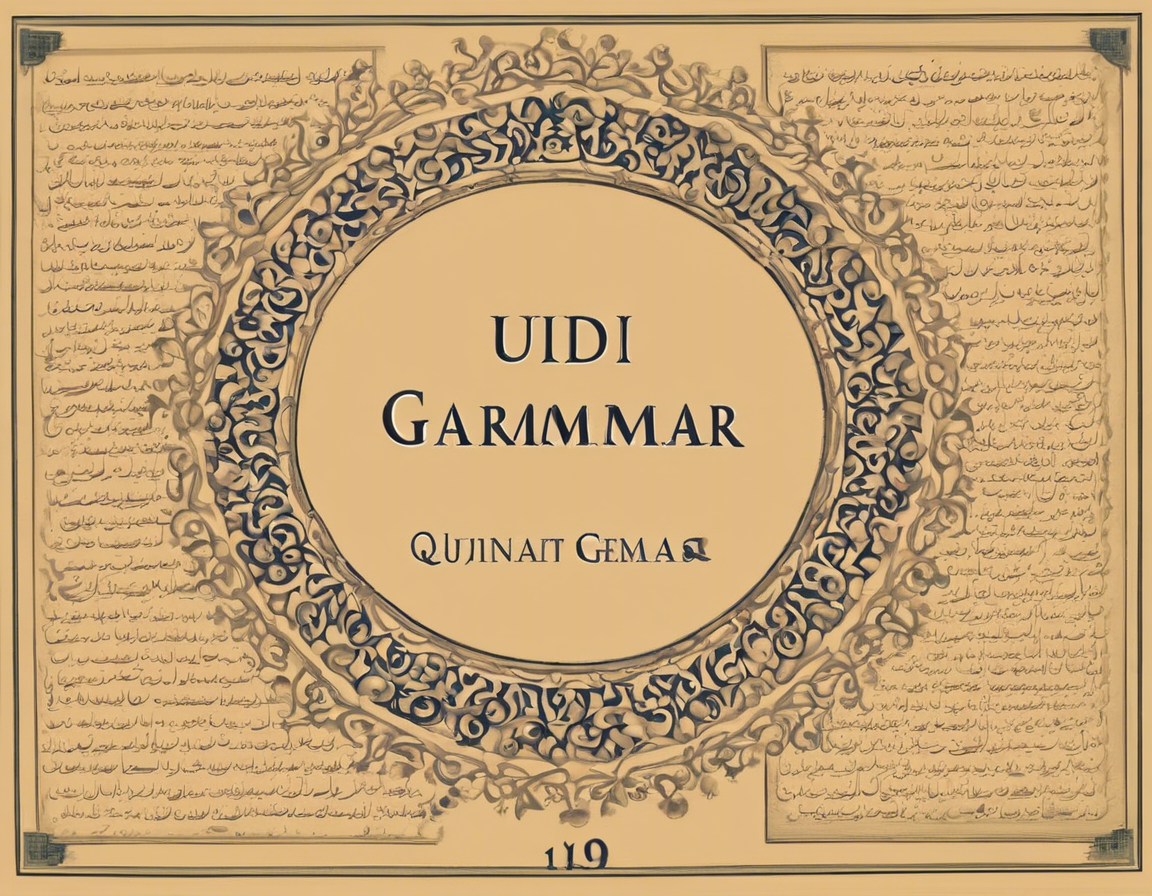Urdu, a beautifully poetic language, is spoken by millions of people worldwide. If you’re looking to learn Urdu, one of the first hurdles you may encounter is mastering its grammar. Fear not, for this beginner’s guide will break down the essentials of Urdu grammar and provide you with a solid foundation to build upon.
Understanding Urdu Grammar Basics
Nouns and Pronouns:
Nouns in Urdu are classified into two genders, masculine and feminine. Unlike English, Urdu nouns do not have a fixed gender and can change based on context. For example, “teacher” in Urdu is “استاد” which is masculine, and “teacher” as a female is “استادہ”. Pronouns in Urdu are categorized into three persons – first person, second person, and third person. Examples of pronouns include “میں” for first person (I), “تم” for second person (you informal), and “وہ” for third person (he/she).
Verbs:
Verbs in Urdu can be a bit tricky for beginners due to their conjugation based on gender, tense, and person. There are three tenses in Urdu: past, present, and future. Verbs in Urdu also change according to the gender of the subject. For example, the verb “to go” in Urdu is “جانا,” which changes to “گیا” for a male subject in the past tense and “گئی” for a female subject.
Adjectives:
Adjectives in Urdu come after the noun they describe, unlike English where they come before the noun. Adjectives in Urdu also change based on the gender of the noun. For example, the adjective “beautiful” in Urdu is “خوبصورت” for a masculine noun and “خوبصورت” for a feminine noun.
Sentence Structure:
The basic sentence structure in Urdu follows Subject-Object-Verb (SOV) order. For example, “میں کتاب پڑھتا ہوں” translates to “I book read” which in proper English would be “I read a book”.
Common Grammar Mistakes to Avoid:
– Mixing up masculine and feminine nouns and pronouns.
– Incorrect verb conjugation based on gender, tense, and person.
– Misplacing adjectives in a sentence.
Advanced Urdu Grammar Concepts:
Cases:
Urdu nouns change form depending on their function in a sentence. There are three cases in Urdu: subjective (رفع), objective (نصب), and genitive (جار). These cases determine the role of the noun in the sentence.
Plurals:
Forming plurals in Urdu can be a bit challenging as they are not as straightforward as adding an “s” in English. Plurals in Urdu can be formed by changing the word itself, adding a suffix, or using a completely different word altogether.
Moods:
Urdu verbs can also denote different moods such as indicative, subjunctive, imperative, and interrogative. Each mood changes the verb structure in a unique way.
Tenses and Aspects:
Apart from the basic past, present, and future tenses, Urdu also has aspects such as perfect, progressive, and habitual. These aspects add more depth to the timeframe of an action.
Commonly Confused Words:
– “کون” vs. “کونسا” (who vs. which)
– “کرنا” vs. “ہونا” (to do vs. to be)
– “جب” vs. “کب” (when vs. where)
Resources for Learning Urdu Grammar:
– Books: “Urdu Grammar” by Rauf Parekh, “Urdu Ki Pehli Kitab” by Ali Asghar Hikmat, “Aasan Urdu Grammar” by Mohammad Iqbal.
– Online Platforms: UrduPod101, Rekhta, BBC Urdu, iTalki.
– Language Exchange: Find a language partner who speaks Urdu and is willing to help you practice.
Frequently Asked Questions (FAQs):
Q: What are the most common Urdu grammar rules beginners should focus on?
A: Beginners should focus on understanding noun and pronoun genders, verb conjugation, adjective placement, and basic sentence structure.
Q: How can I improve my Urdu grammar skills on a daily basis?
A: Practice regularly by reading Urdu texts, listening to Urdu songs or podcasts, speaking with native speakers, and writing simple sentences.
Q: Are there any online resources specifically designed for learning Urdu grammar?
A: Yes, platforms like UrduPod101, Rekhta, and BBC Urdu offer comprehensive lessons and exercises to improve Urdu grammar skills.
Q: What is the best way to memorize Urdu verb conjugations effectively?
A: Create flashcards, practice with verb conjugation exercises, use mnemonic devices, and apply verbs in context through speaking and writing.
Q: How important is understanding Urdu cases in mastering the language’s grammar?
A: Understanding Urdu cases is crucial as they determine the function of nouns in a sentence and help in accurate communication.
In conclusion, mastering Urdu grammar requires dedication, practice, and a solid understanding of its unique features. By focusing on key elements such as nouns, verbs, adjectives, sentence structure, and advanced concepts like cases and moods, you can navigate the intricacies of Urdu with confidence. Remember, learning a new language is a journey, so be patient with yourself and enjoy the process of exploring the richness of Urdu grammar.
